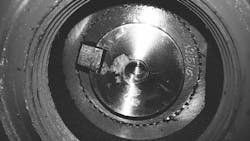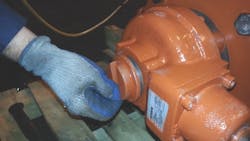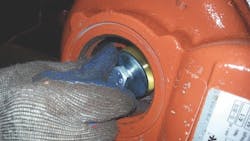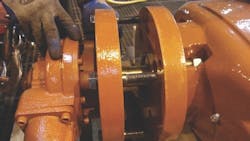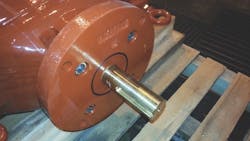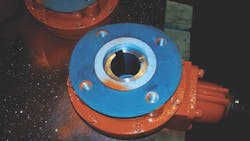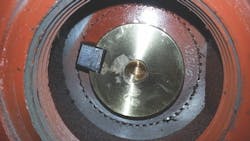Switching Gears
Wedge gate valves are widely used in water systems, as they serve to supply water, control flow and isolate sections of pipeline and pressure zones. Due to unexpected changes in valve orientation, it is common for valves to be reconfigured on site; this can be achieved through the addition of a gear operator to a non-geared valve or by changing the gear type (e.g. from bevel to spur or vice versa). Gear operator kits of all types are available from manufacturers for a wide range of valve sizes. It is advisable to seek assistance from a representative of a gate valve manufacturer before making any changes, including commissioning and repairs of the product.
Below are step-by-step instructions for addressing both types of configuration changes. You will need a socket driver, socket set and allen wrenches to complete this conversion.
Step-by-Step Non-Gear-to-Gear Conversion
1. If the valve is commissioned in a line, isolate the valve from flow and relieve the line pressure. The valve must be kept in vertical position during conversion to allow for stem reinsertion.
Step 1: Remove the cap from the gear.
2. Remove stuffing box bolts and turn the operating nut/stem in the closing direction until it has disengaged from the disc nut. At this point, the stem will be able to turn in the closing direction but will not continue rising out of the valve body.
Step 2: Remove bolt and washer from the top of the stem
3. Remove the stem/operating nut/stuffing box assembly by lifting the stem vertically out of the valve bonnet and set aside. Remove washer from bonnet recess.
Step 3: Remove the four nuts from the stuffing box/gear adapter bolts.
4. Lubricate new thrust washer with approved grease and place in bonnet recess.
Step 4: The gear should appear as such. The valve will still contain pressure.
5. Lubricate stem threads and O-rings.
6. Install three new O-rings on geared stem.
Step 6: Disassembled view.
7. Insert the geared stem into the bonnet, turning the stem in the opening direction until stem thrust collar is seated in bonnet recess. Continue rotating the stem two to three turns to ensure it is firmly seated. Lubricate and install thrust washer on top of thrust collar.
8. Place gear stuffing box over stem and install bolts to assemble stuffing box to bonnet.
9. Place flat gear gasket on the adapter plate. Fasten gear operator to the gear adapter plate with cap screws.
10. Place adapter plate and gear operator over the stem. On smaller valves (typically 12 in. and under), the drive sleeve must be aligned to the stem key before assembly. On larger valves (typically 14 in. and above), align the drive sleeve key slot to the stem key slot by rotating the operating nut. When aligned, insert the drive key in the slot until it is flush with the top of the drive sleeve.
Step 10: Align the keyways on the stem and gear.
11. Install the hold-down cap screw and washer onto the top of the stem.
12. Rotate the adapter assembly to align the bolt holes with the stuffing box and fasten bolts to the manufacturer’s recommended torque. Reinstall cover on top of the gear.
Step-by-Step Process for Gear-to-Gear Conversion
1. Remove cover from top of old gear unit.
2. Remove the hold-down cap screw and washer from the top of the stem.
3. Remove bolts holding the adapter plate to the stuffing box. Remove adapter plate/gear assembly from valve.
4. Remove the four cap screws securing the gear assembly to the adapter plate. Set old gear unit aside. Remove flat gear gasket.
5. For large valves, ensure the drive key has been removed from the slot in the stem. For small valves, the key should remain in the stem.
6. Place flat gearing gasket on adapter plate. Place new gear unit on flat gasket. Secure gear to adapter plate using four cap screws.
7. Remove pipe plug from the new gearing unit.
8. Place adapter plate/gear assembly on the stuffing box. On small valves, the drive sleeve must be aligned to the stem key before assembly. Attach adapter plate to stuffing box.
9. For large valves, align the drive sleeve key slot to the stem key slot by rotating the operating nut. When aligned, insert the drive key in the slot until it is flush with the top of the drive sleeve.
10. For large valves, install the hold-down cap screw and washer onto the top of the stem. Reference manufacturer’s recommended torque for proper installation.
11. Install pipe plug onto new gearing unit
